There’s nothing better than enjoying a slice of chiffon cake. It has a fantastic cloudlike texture that just melts in your mouth. At first glance, this airy sponge-like cake may seem challenging to make, but this cake is quite straightforward. With my step-by-step guide, you’ll have a tall and fluffy chiffon cake ready in no time. For another cake recipe that you can serve from holidays to birthdays, try my easy yellow cake, zebra cake, or homemade funfetti cake.
What You Need to Make This Recipe
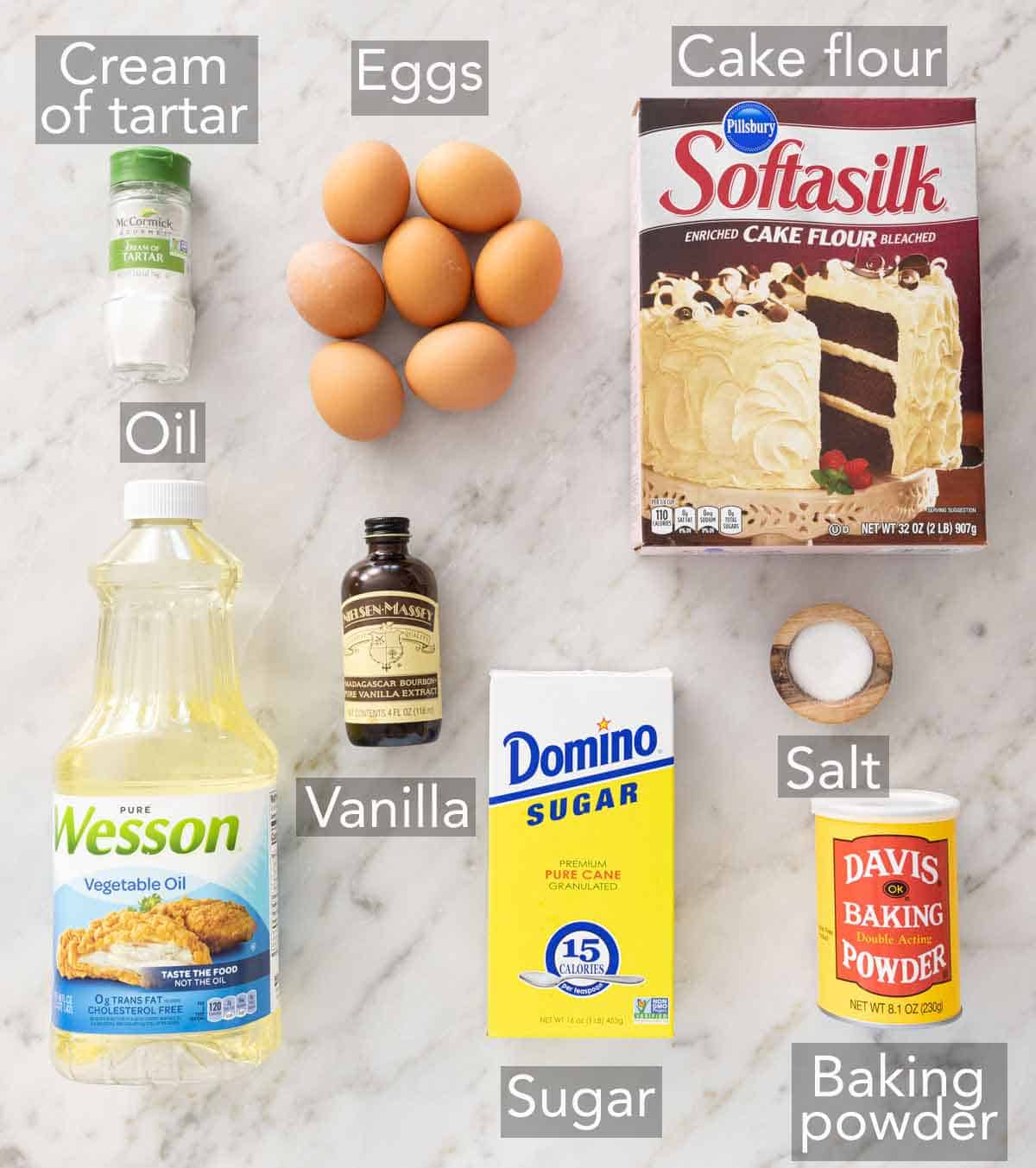
Cake flour — chiffon cake uses cake flour for a lighter crumb as it’s lighter and finer than standard all-purpose flour. The cake flour will keep your cake tender and soft.
Baking powder — check the expiry date to make sure you’re using fresh baking powder.
Eggs — the egg whites and yolks need to be separated for this cake. Whipping the egg whites into a meringue helps keep the cake light and delicate as well as help lift the cake as it bakes.
Vegetable oil — the oil adds flavor, moisture, and improves the texture of the cake. It’s the secret to getting that melt-in-your-mouth texture! As oil doesn’t solidify at room temperature, the cake stays moist even when cold.
Cream of tartar — half a teaspoon may not seem like a lot but don’t skip the cream of tartar! It helps stabilize the egg whites, so the cake’s light crumb is sturdy as well.
How to Make Chiffon Cake
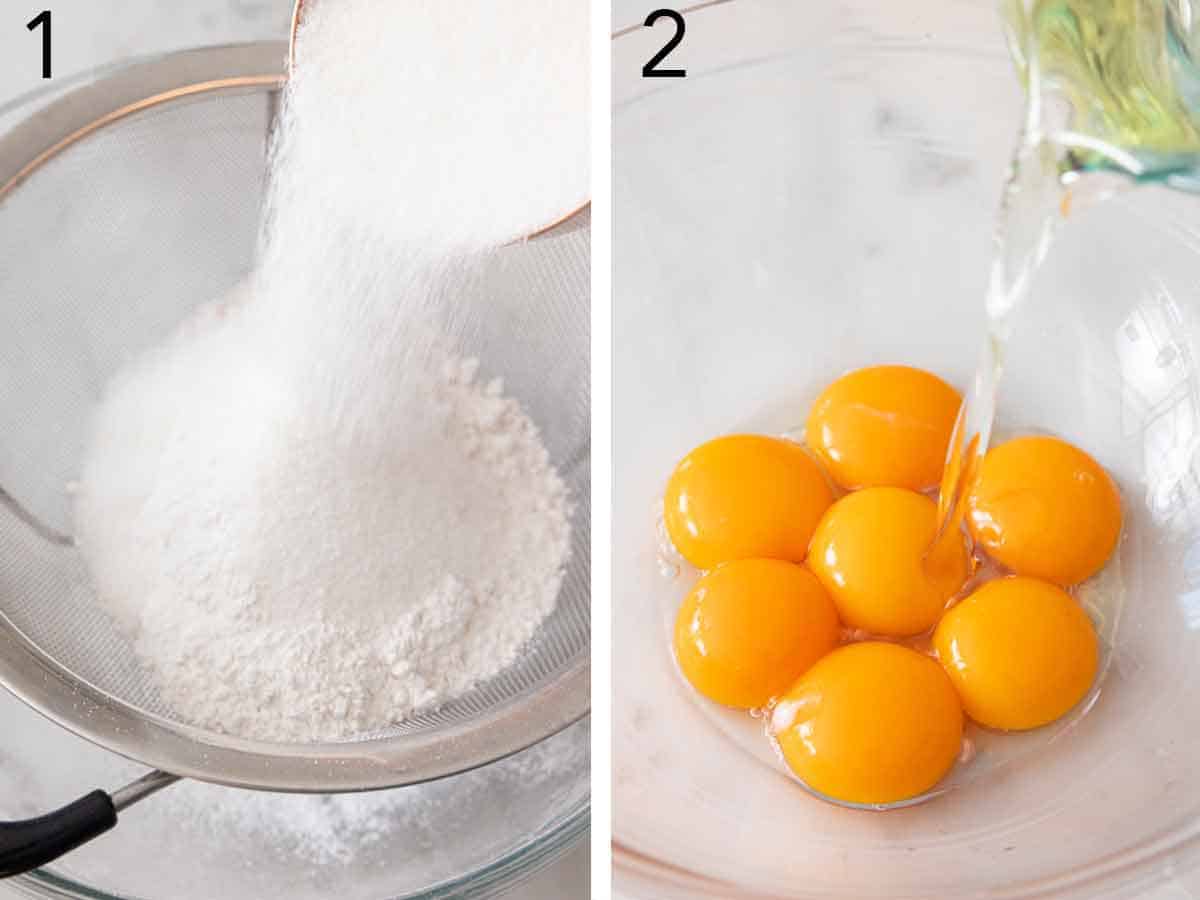
1. In a large bowl, sift together the flour, sugar, baking powder, and salt.
2. In a medium bowl, whisk together egg yolks, water, oil, and the vanilla extract until pale and frothy, about 30 seconds.
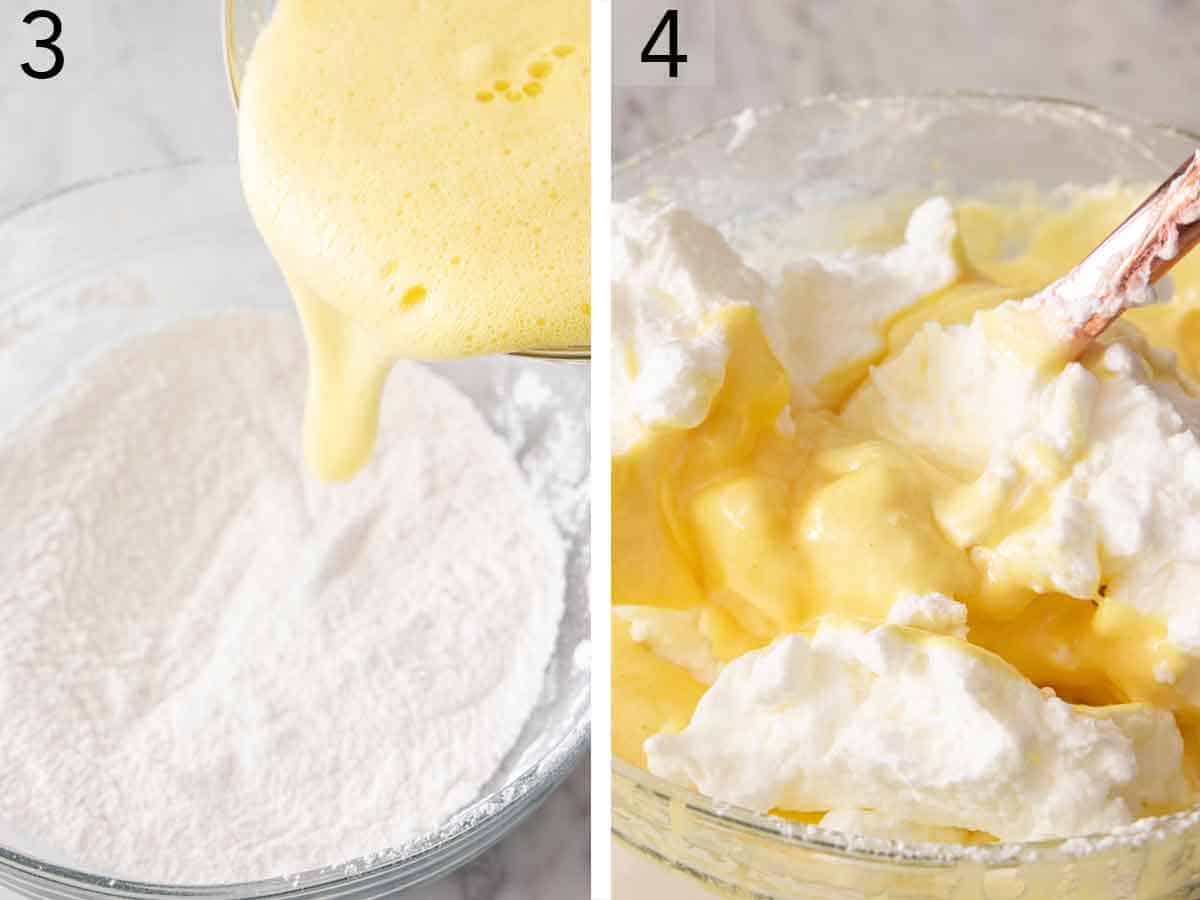
3. Add egg yolk mixture to flour mixture, whisking until well combined.
4. In the mixing bowl of a stand mixer, beat the egg whites and cream of tartar on medium-high speed until stiff peaks form, about 6 minutes. Fold one-fourth of the egg whites into the flour mixture, until just combined. Gently fold in the remaining egg whites.
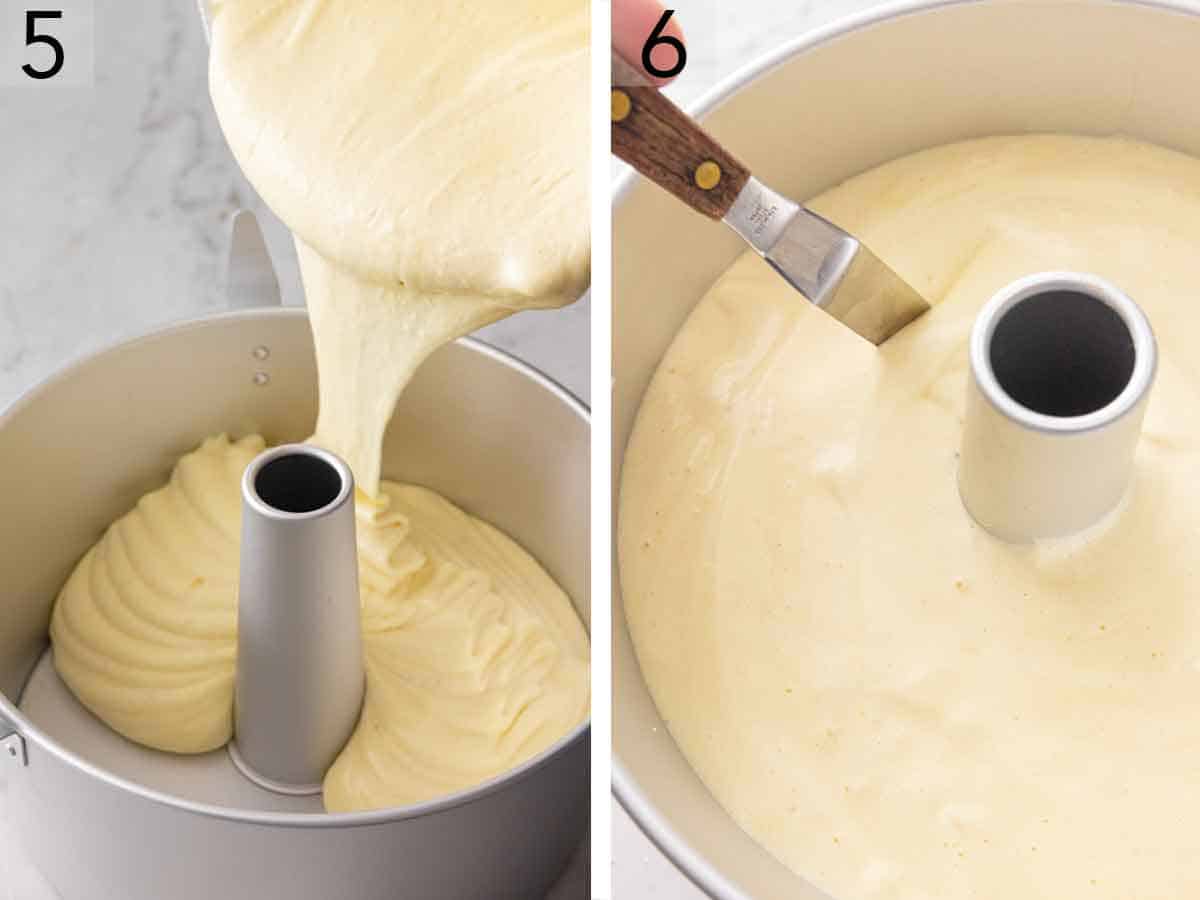
5. Spoon batter into an ungreased 10-inch tube pan.
6. Run a butter knife gently through the batter to release any potential air pockets. Bake on the lowest rack for 1 hour. Immediately invert the pan onto a wire rack and let the cake cool completely in the pan. When cooled, gently run a knife around the edges of the pan to release the cake. Place the cake on a cake stand and garnish with powdered sugar, if desired.

Pro Tips for Making This Recipe
- For the fluffiest cake, do not skip sifting your dry ingredients. Sifting will aerate them and remove any possible lumps in the dry ingredients.
- I highly recommend using a scale to measure your flour. However, if you don’t have a scale, be sure to fluff your flour with a spoon and then spoon it into your cups before leveling it off with a knife. This method is the best way to measure flour without overpacking the measuring cup.
- Avoid over-mixing as you risk over-developing the gluten in the batter leading to a tough, dry, and dense cake.
- Eggs are easier to separate when cold. Egg whites whip up easier when closer to room temperature. I recommend separating them in advance if you have the time.
- If you don’t want to garnish with powdered sugar, add dollops of whipped cream and berries.
- When folding in the egg whites, turn the mixture in on itself with a cutting motion, not stirring. This way, you do not deflate the egg whites.
- When whipping the egg whites, make sure there’s no water or liquid in the mixer as it’ll prevent the egg whites from forming peaks.
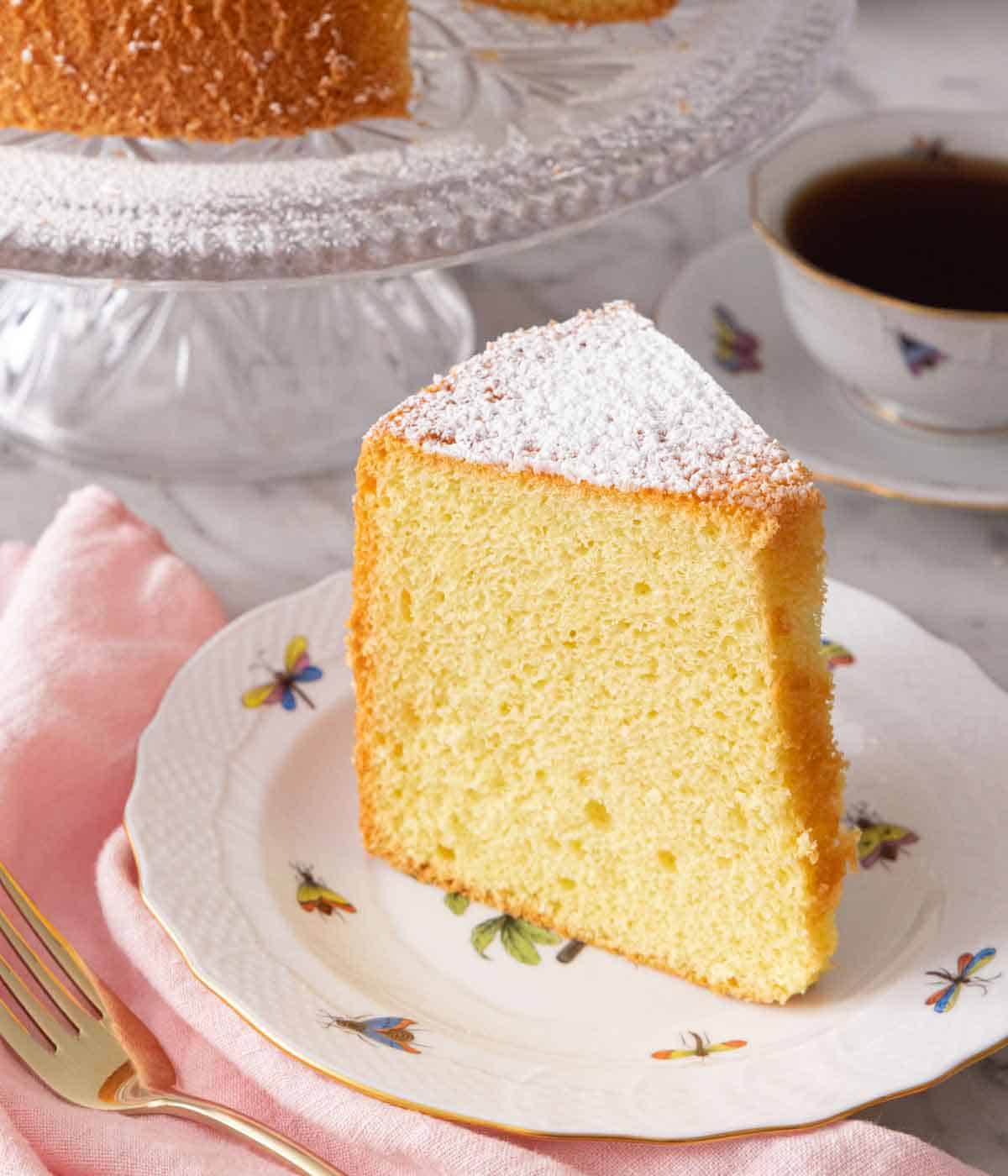
Frequently Asked Questions
What is the difference between this and an angel cake?
The two cakes are similar as they’re both light and fluffy, but angel food cake does not contain egg yolks and fat (such as oil and butter), but chiffon cake has both.
Why do I need a tube pan?
While you can bake a chiffon cake in a regular cake pan, a tube pan helps yield a chiffon cake with the lightest texture. The tube in the middle is so the cake can climb up to make for a tall and fluffy cake.
Why did my cake collapse?
If you under whip the egg whites, it weakens the cake structure, and your cake might collapse. Making sure the baking powder is fresh, the egg whites are whipped, and using a tube pan will lead to a successful bake.
How do I store leftover cake?
Once cooled, keep leftover chiffon cake covered in a sealed airtight container or tightly wrapped in plastic wrap. It’ll keep at room temperature for 3 to 4 days.
Is this freezer-friendly?
Yes, it is. Once completely cooled, tightly wrap in a layer of plastic wrap and a layer of tin foil and freeze for up to 3 months. Thaw in the refrigerator overnight before bringing to room temperature before serving.
If you’ve tried this Chiffon Cake recipe, then don’t forget to rate the recipe and let me know how you got on in the comments below, I love hearing from you!
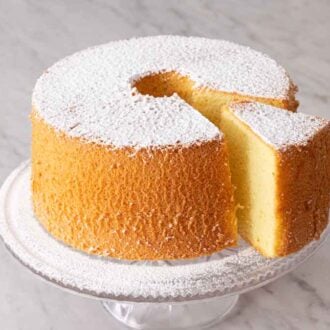
Chiffon Cake
Video
Equipment
- Mixer
- Tube pan
Ingredients
- 1¾ cups cake flour (210g)
- 1¼ cups granulated sugar (250g)
- 1 tablespoon baking powder
- ¾ teaspoon salt
- 7 large egg yolks room temperature
- ¾ cup cold water 180mL
- ½ cup vegetable oil (120mL)
- 2 teaspoons vanilla extract
- 7 large eggs whites room temperature
- ½ teaspoon cream of tartar
Instructions
- Position an oven rack to the lowest level and preheat the oven to 325F.
- In a large bowl, sift together the flour, sugar, baking powder, and salt. In a medium bowl, whisk together egg yolks, water, oil, and vanilla until pale and frothy, about 30 seconds. Add egg yolk mixture to flour mixture, whisking until well combined.
- In the bowl of a stand mixer fitted with a whisk attachment, beat the egg whites and cream of tartar on medium-high speed until stiff peaks form, about 6 minutes. Fold one-fourth of the egg whites into the flour mixture, until just combined. Gently fold in the remaining egg whites. Spoon batter into an ungreased 10-inch tube pan. Run a butter knife gently through the batter to release any potential air pockets.
- Bake on the lowest rack for 1 hour or until a wooden pick inserted in the center comes out clean. (Take should spring back when gently poked with your finger.) Immediately invert the pan onto a wire rack and let the cake cool completely in the pan. When cooled, gently run a knife around the edges of the pan to release the cake. Place the cake on a cake stand and garnish with confectioners’ sugar, if desired.
Notes
- For the fluffiest cake, do not skip sifting your dry ingredients. Sifting will aerate them and remove any possible lumps in the dry ingredients.
- I highly recommend using a scale to measure your flour. However, if you don’t have a scale, be sure to fluff your flour with a spoon and then spoon it into your cups before leveling it off with a knife. This method is the best way to measure flour without overpacking the measuring cup.
- Avoid over-mixing as you risk over-developing the gluten in the batter leading to a tough, dry, and dense cake.
- Eggs are easier to separate when cold. Egg whites whip up easier when closer to room temperature. I recommend separating them in advance if you have the time.
- If you don’t want to garnish with powdered sugar, add dollops of whipped cream and berries.
- When folding in the egg whites, turn the mixture in on itself with a cutting motion, not stirring. This way, you do not deflate the egg whites.
- When whipping the egg whites, make sure there’s no water or liquid in the mixer as it’ll prevent the egg whites from forming peaks.



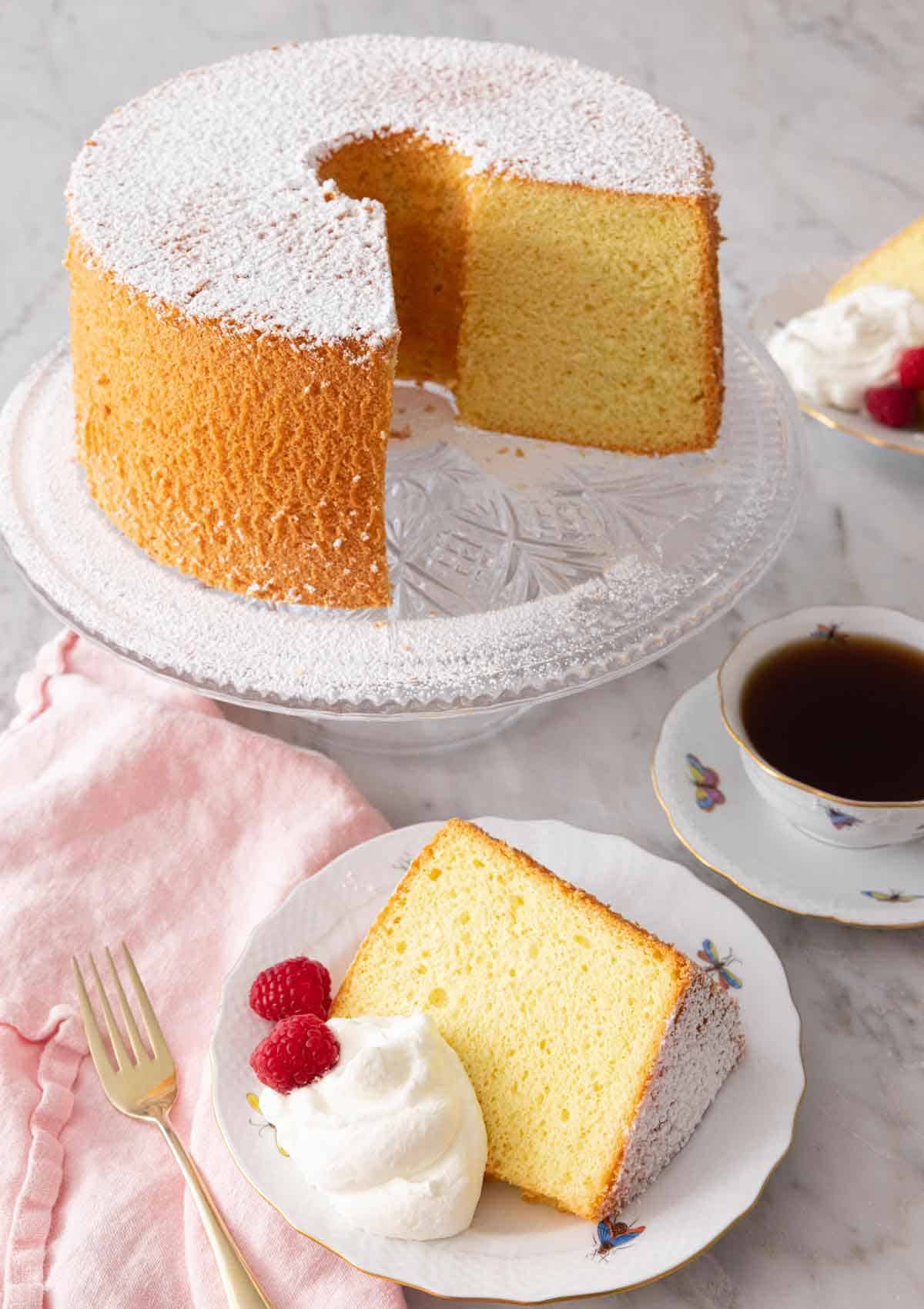

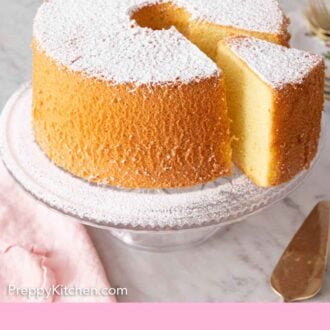

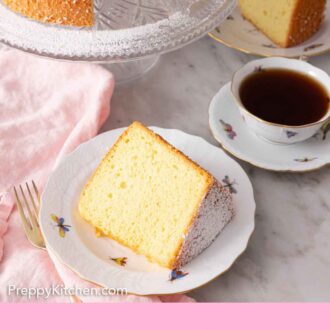
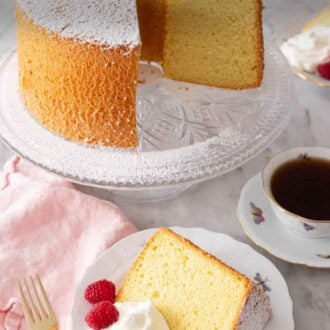
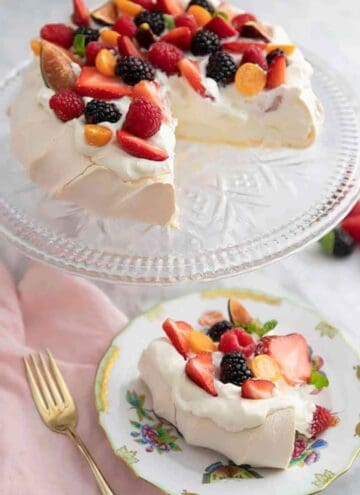
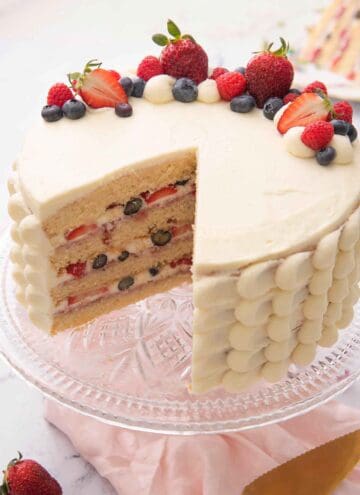
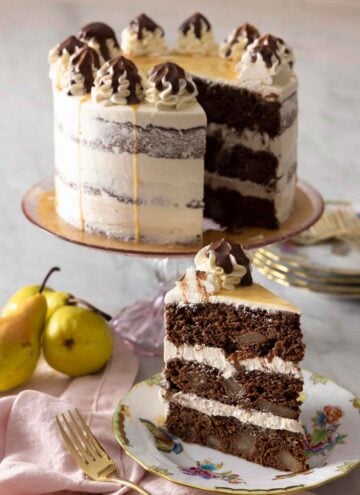
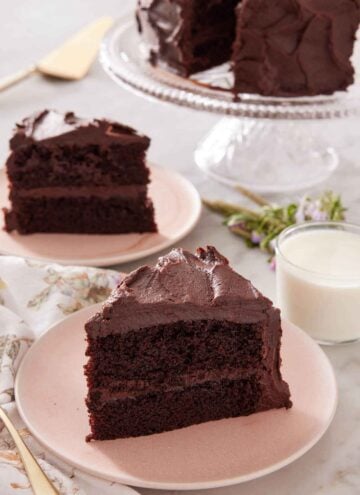
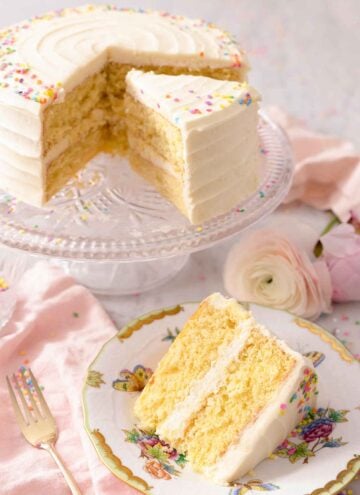
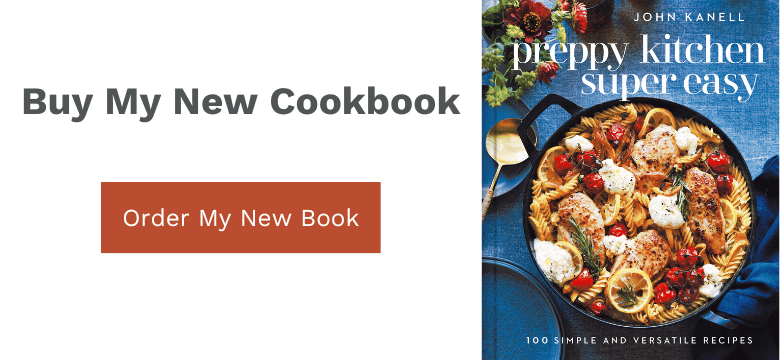
Rebecca says
Looked just like picture! Great recipe
Patty says
I love your recipes and videos and am a long time viewer. This recipe is one I have wanted to try. Today I made it and it came out beautiful. It tastes awesome and is the perfect selection for someone who does not like a really sweet cake. I did add orange flavoring to mine along with the vanilla and it was really good.
The only problem I encountered was forgetting to sift flour and you were right, I did not get the height but it was still awesome.
Thank you for all your time, videos and your love of cooking.
Negar Nz says
Amazing
Aly says
So light, airy, and fluffy! This’ll definitely be my cake base from now
Pieter van Niekerk says
I have tried to follow the recipe for the Vanilla chiffon cake,and it came out perfectly.Thanks
Cina Caplo says
very cool
Sarah says
Thank you— It turned out perfectly!! SO good!!
Tanis Magnusson says
Super easy to make, yeah I I’m serving it with raspberries and whipped cream. I have a similar recipe that I use with orange juice and orange rind. It’s my go to birthday cake, people don’t understand how easy chiffon cake is